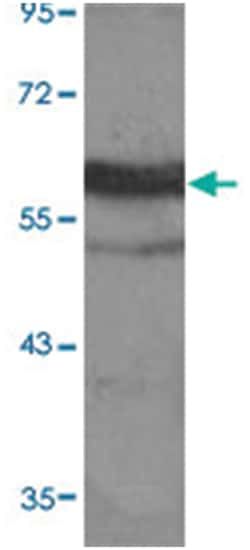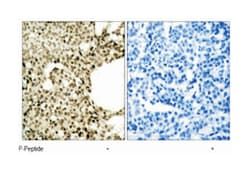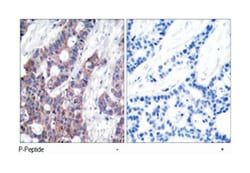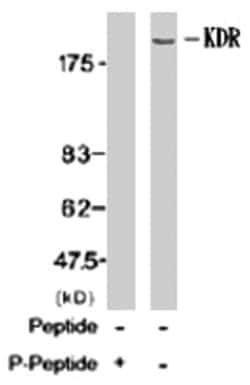RELA (phospho T254), Rabbit anti-Human, Mouse, Rat, Polyclonal Antibody, Abnova™
Manufacturer: Abnova Corporation
Select a Size
| Pack Size | SKU | Availability | Price |
|---|---|---|---|
| Each of 1 | 89-133-622-Each-of-1 | In Stock | ₹ 57,138.00 |
89-133-622 - Each of 1
In Stock
Quantity
1
Base Price: ₹ 57,138.00
GST (18%): ₹ 10,284.84
Total Price: ₹ 67,422.84
Antigen
RELA
Classification
Polyclonal
Conjugate
Unconjugated
Dilution
Immunohistochemistry (1:50-1:100) Western Blot (1:500-1:1000) The optimal working dilution should be determined by the end user.
Gene
RELA
Gene Symbols
RELA
Immunogen
Synthetic phosphopeptide corresponding to residues surrounding T254 of human RELA.
Quantity
100 μL
Primary or Secondary
Primary
Target Species
Human, Mouse, Rat
Form
Liquid
Applications
Immunofluorescence, Immunohistochemistry (PFA fixed), Western Blot
Concentration
1 mg/mL
Description
Rabbit polyclonal antibody raised against synthetic phosphopeptide of RELA.
Formulation
In PBS (without Mg2+and Ca2+), 150mM NaCl, pH 7.4 (50% glycerol, 0.02% sodium azide)
Gene Alias
MGC131774/NFKB3/p65
Host Species
Rabbit
Purification Method
Immunoaffinity purification
Regulatory Status
RUO
Gene ID (Entrez)
5970
Content And Storage
Store at -20°C.Aliquot to avoid repeated freezing and thawing.
Description
- NFKB1 (MIM 164011) or NFKB2 (MIM 164012) is bound to REL (MIM 164910), RELA, or RELB (MIM 604758) to form the NFKB complex
- The p50 (NFKB1)/p65 (RELA) heterodimer is the most abundant form of NFKB
- The NFKB complex is inhibited by I-kappa-B proteins (NFKBIA, MIM 164008 or NFKBIB, MIM 604495), which inactivate NFKB by trapping it in the cytoplasm
- Phosphorylation of serine residues on the I-kappa-B proteins by kinases (IKBKA, MIM 600664, or IKBKB, MIM 603258) marks them for destruction via the ubiquitination pathway, thereby allowing activation of the NFKB complex
- Activated NFKB complex translocates into the nucleus and binds DNA at kappa-B-binding motifs such as 5-prime GGGRNNYYCC 3-prime or 5-prime HGGARNYYCC 3-prime (where H is A, C, or T; R is an A or G purine; and Y is a C or T pyrimidine).[supplied by OMIM



